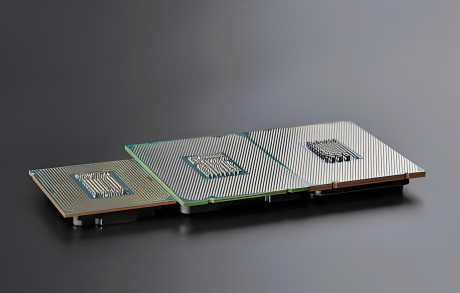The printed circuit board thickness standard is often marked on the engineer's drawings with a precision of 0.1mm, but on the production line it touches the nerves of the entire manufacturing system. This seemingly simple value, in fact, is one of the most contradictory parameters in the electronics industry, which carries the physical mission of mechanical support, but also affects the delicate balance of signal transmission, but also the sensitive nerve of the production costs.
In Shenzhen, a circuit board factory, there has been a typical quality incident: a smart watch manufacturers in pursuit of thin and light, the PCB thickness compression to 0.4mm. the first batch of samples passed the test perfectly, but in the mass production stage there are 30% of the board bending warping. The root of the problem lies in the difficulty of controlling the thermal deformation coefficient of ultra-thin boards in the reflow soldering process. This case reveals the complex physical game behind the thickness parameter.
Mechanical properties of the critical point is often formed in the 0.8mm thickness of the watershed. When the plate thickness is lower than this value, FR-4 substrate bending strength decreased exponentially. An industrial control equipment manufacturer's test data show that 1.6mm thick plate can withstand a vertical pressure of 500N, while 0.8mm thick plate in 300N that is the emergence of micro-cracks. This nonlinear variation requires engineers to establish a three-dimensional stress model for prediction.
In the millimeter wave band, plate thickness becomes the invisible director of electromagnetic fields. A 5G base station antenna board design case shows that when the plate thickness is adjusted from 0.5mm to 0.508mm, the VSWR in the 28GHz band improves by 0.15. Such micron-level adjustments require precise calculations of the effect of the dielectric layer on the phase of the electromagnetic wave, and often need to be optimized in combination with full-wave simulation software.

The consumer electronics field is staging the extreme challenge of thickness. The thickness of the motherboard of a flagship cell phone has exceeded the 0.3mm threshold, using a new modified epoxy resin + 2μm copper foil stacking program. This structure requires three laminations in a 0.05mm PP semi-cured sheet to control the Z-axis expansion coefficient within 3ppm/°C, equivalent to thermodynamic equilibrium within the diameter of a hairline.
Automotive electronics on the thickness of the requirements of the trend of polarization. ECU control module commonly used 2.4mm thick board to deal with the vibration environment, while the car camera module uses 0.6mm ultra-thin board. Measured data from a German automaker shows that for every 0.1mm increase in board thickness, the thermal stress in a -40°C environment will be reduced by 8%, but the weight will increase by 5% accordingly. This trade-off requires the establishment of a multi-dimensional scoring system. the printed circuit board thickness standard
The military industry has created unique thickness criteria. The PCB of an on-board computer is designed with a 3.2mm extra-thick board, embedded with a 12-layer mixed media structure. Among them, 2-3 layers of 0.13mm polyimide film, 4-5 layers of 0.25mm ceramic filler material, this “sandwich” structure so that the plate in the 20G impact when the deformation is controlled within 0.1mm.
The temperature profile of the lamination process is a dark battlefield of thickness control. A Taiwan-funded board factory's production log shows that when pressing 1.6mm eight-layer board, the heating rate needs to be controlled at 3 ℃ / min, in the 120 ℃ heat preservation section to maintain 25 minutes to make the resin flow fully. Too fast heating will lead to thickness deviation of more than ± 0.07mm military standard requirements, this process know-how often requires more than ten years of experience.
The micron-level competition of the drilling process is seen in the quality of the hole wall. Processing 0.3mm thick plate, the use of 0.15mm drilling needle feed rate must be reduced from the conventional 1.2m/min to 0.8m/min, the spindle speed is correspondingly increased to 180,000 rpm. A Japanese equipment manufacturer's experimental data show that this adjustment can make the hole position accuracy to ± 0.025mm, while the incidence of nail head phenomenon from 5% to 0.3%.
In a testing laboratory in East China, thickness measurement has entered the nanometer era. They use a laser confocal microscope for three-dimensional reconstruction of the cross-section, and can detect thickness fluctuations at the 0.5μm level. This precision is especially important for high-frequency circuits, and the test report of a millimeter-wave radar board shows that the phase consistency in the 0.8mm board thickness region is 40% higher than the 0.78mm region.
From smartphones to spacecraft, PCB thickness is always looking for a dynamic balance between lightweight and reliability. The printed circuit board thickness standard, every adjustment of this parameter is a complex symphony of material science, process technology and application requirements. As the industry moves toward the 5G and AI era, thickness control is no longer just a manufacturing issue, but has evolved into a systematic project involving multiple disciplines. In the foreseeable future, intelligent thickness compensation technology and adaptive lamination systems may rewrite the existing rules of the game.